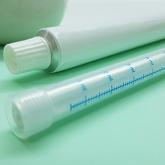Opinion

A new nonhormonal option for menopausal hot flashes: What prescribers should know
- Author:
- JoAnn V. Pinkerton, MD
In two phase 3 clinical trials, fezolinetant 45 mg reduced the frequency of vasomotor symptoms by about 65%.
Article

Is vaginal estrogen used for GSM associated with a higher risk of CVD or cancer?
- Author:
- JoAnn V. Pinkerton, MD
No. Vaginal estrogen use (average duration of use, 37.5 months) for genitourinary symptoms of menopause (GSM)...
Article

Managing menopausal vasomotor and genitourinary symptoms after breast cancer
- Author:
- JoAnn V. Pinkerton, MD
Two cases on selecting safe and useful treatments for survivors of breast cancer experiencing distressing quality-of-life...
Audio

Managing menopausal symptoms in breast cancer survivors
- Author:
- JoAnn V. Pinkerton, MD
What types of menopausal symptoms are breast cancer survivors faced with, and following breast cancer, what treatments should clinicians...
News
Conjugated estrogen plus bazedoxifene—a new approach to estrogen therapy
- Author:
- Anne A. Moore, DNP, APN
- JoAnn V. Pinkerton, MD
For which of my patients is this treatment appropriate?
Audio
Your menopausal patient’s breast biopsy reveals atypical hyperplasia
- Author:
- JoAnn V. Pinkerton, MD
How do you now manage her menopausal symptoms, including bothersome hot flashes?
Audio

How I screen patients at increased risk for breast cancer
- Author:
- JoAnn V. Pinkerton, MD
Hear Dr. Pinkerton discuss: How often women who are at high-risk for breast cancer should be screened New screening tools: breast tomosynthesis...
News
Can nonhormonal treatments relieve hot flushes in breast Ca survivors?
- Author:
- JoAnn V. Pinkerton, MD
Yes. A Cochrane Review found clonidine, selective serotonin reuptake inhibitors (SSRIs), selective norepinephrine reuptake inhibitors (SNRIs),...
News
“Bioidentical” hormones: What you (and your patient) need to know
- Author:
- JoAnn V. Pinkerton, MD
Here’s the skinny on compounded “bioidentical” hormone therapy—popular among women but absolutely data-free
News
Does the HRT-associated risk of breast cancer vary by histologic type and hormone regimen?
- Author:
- JoAnn V. Pinkerton, MD
News
Q How common is hypoactive sexual desire disorder?
- Author:
- JoAnn V. Pinkerton, MD
